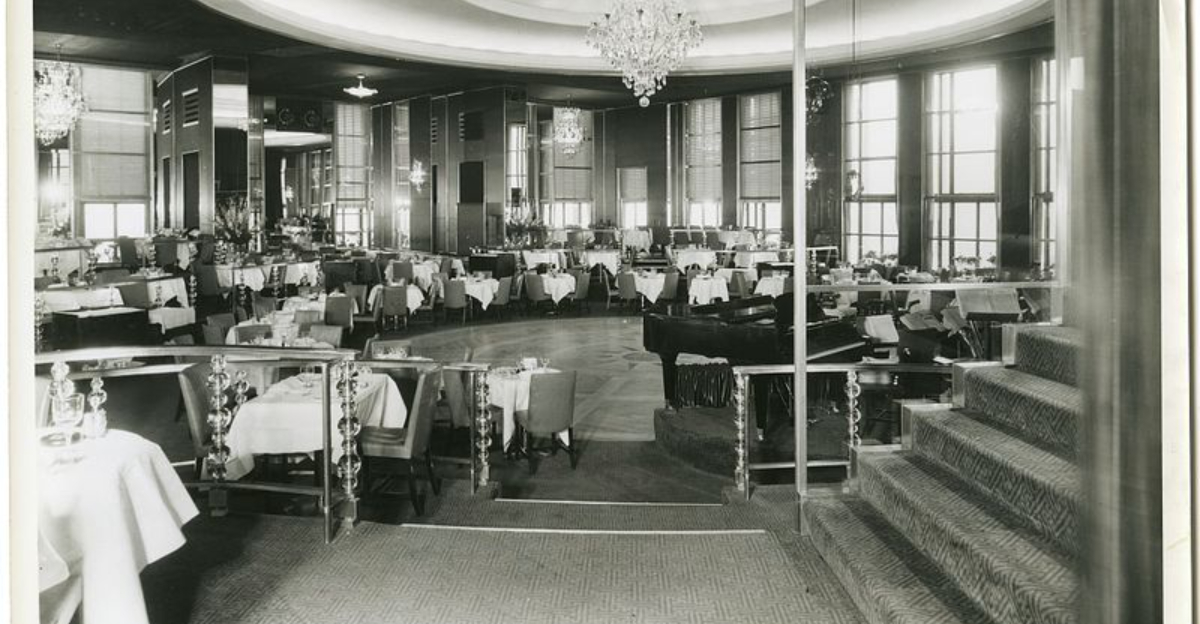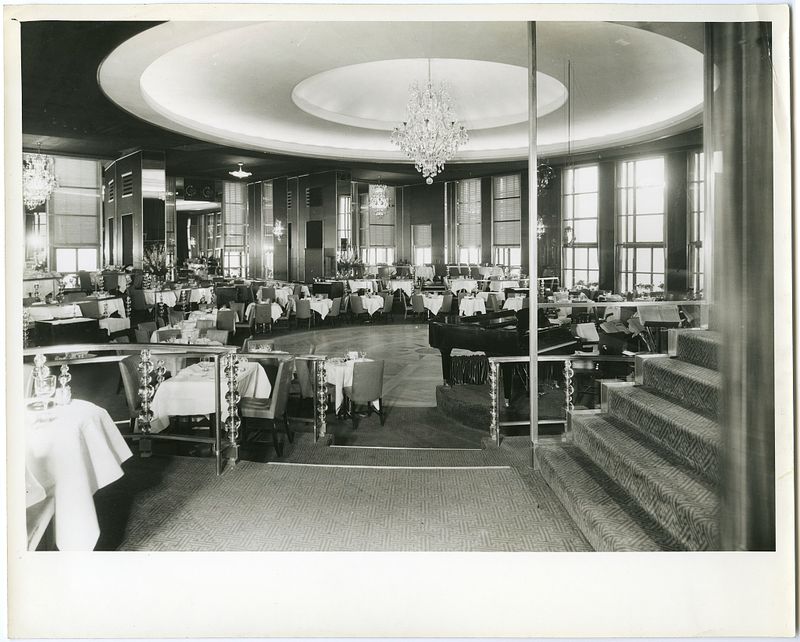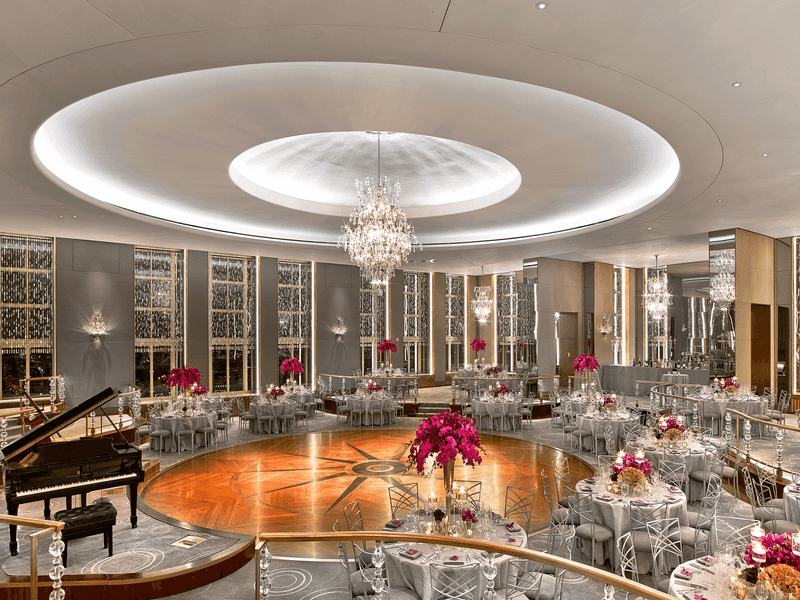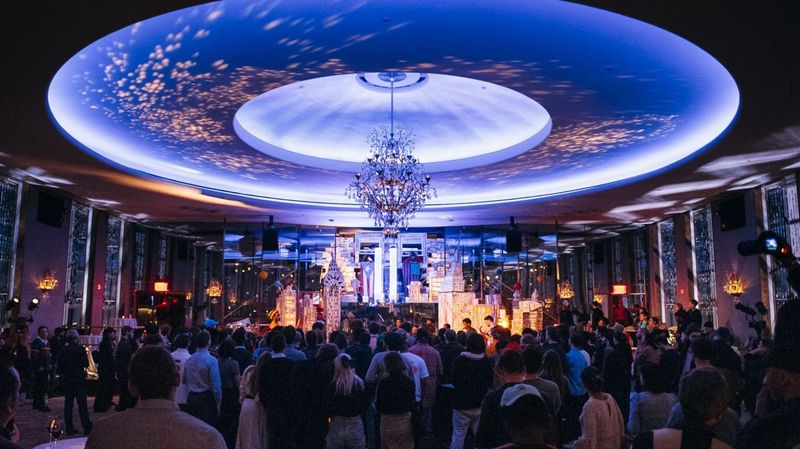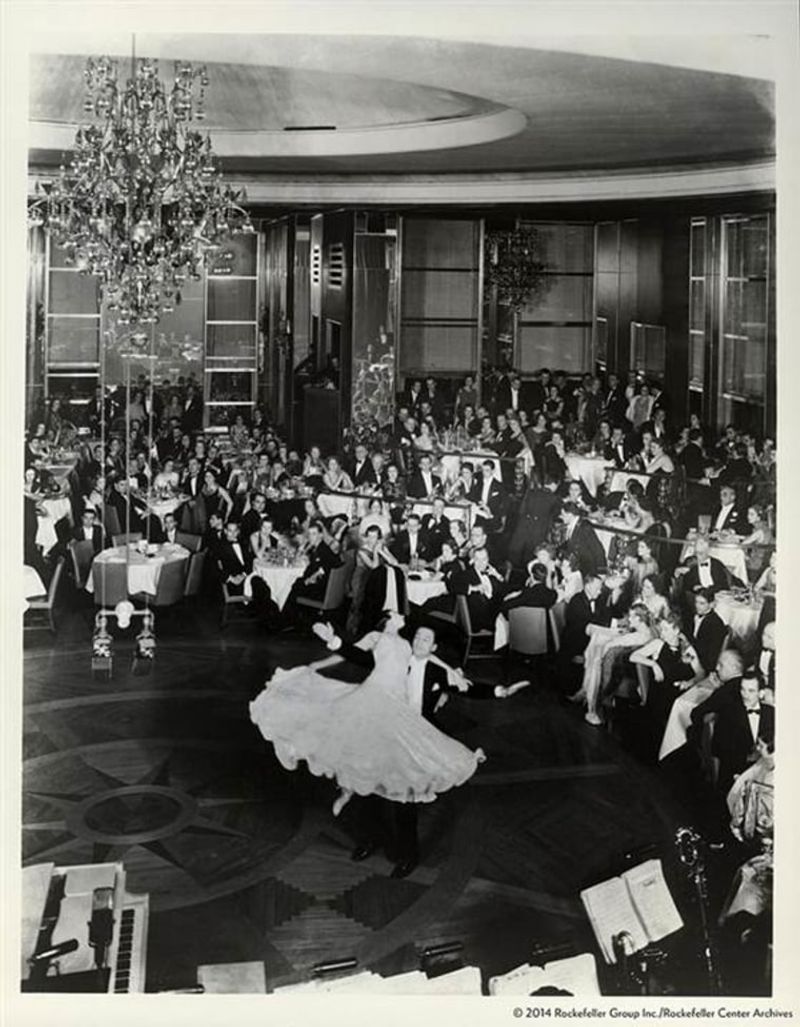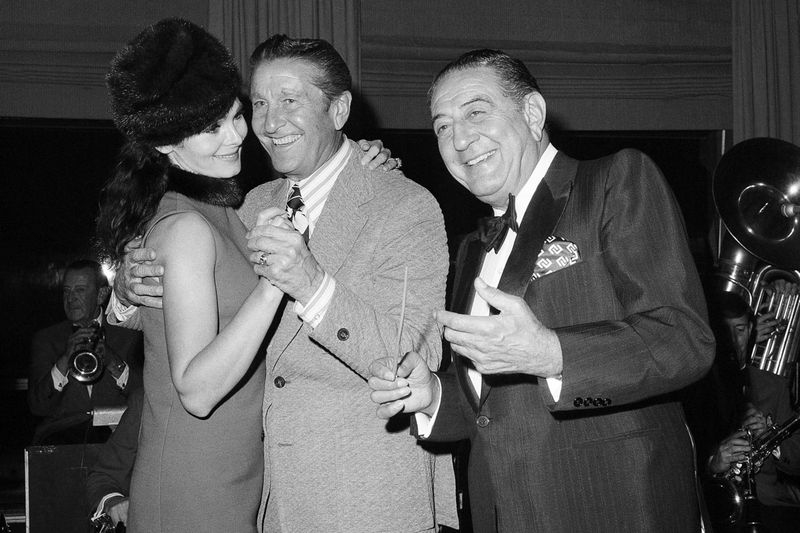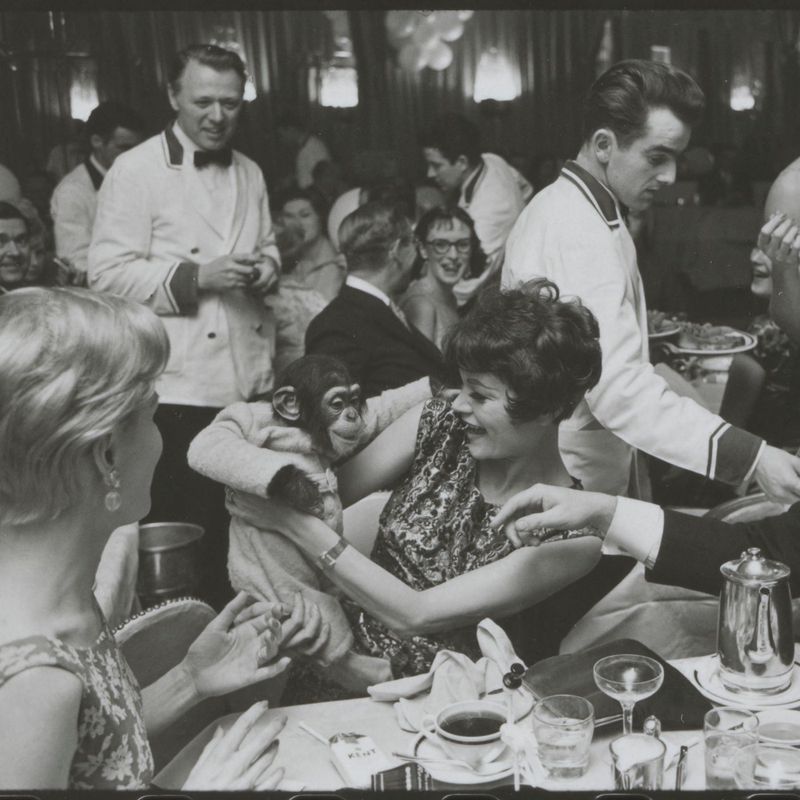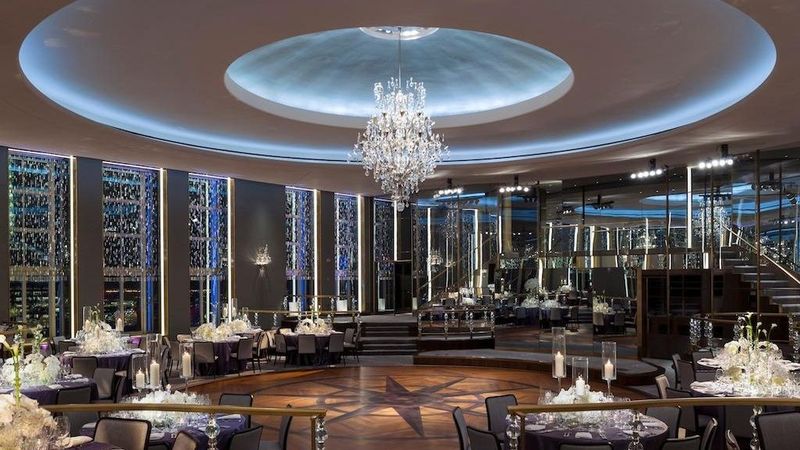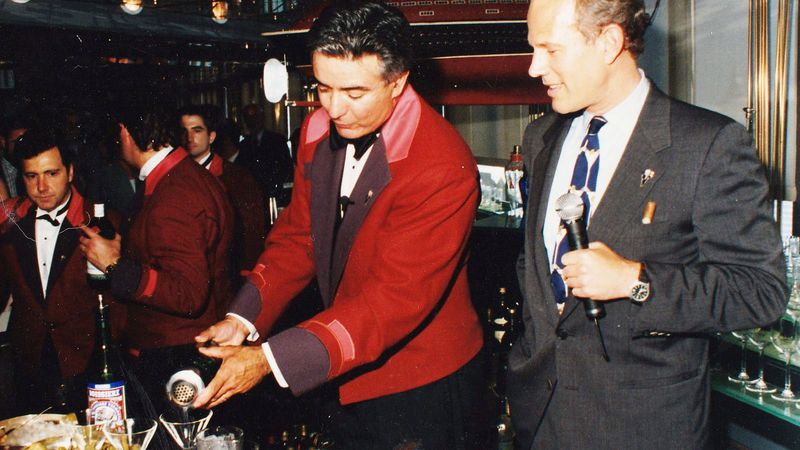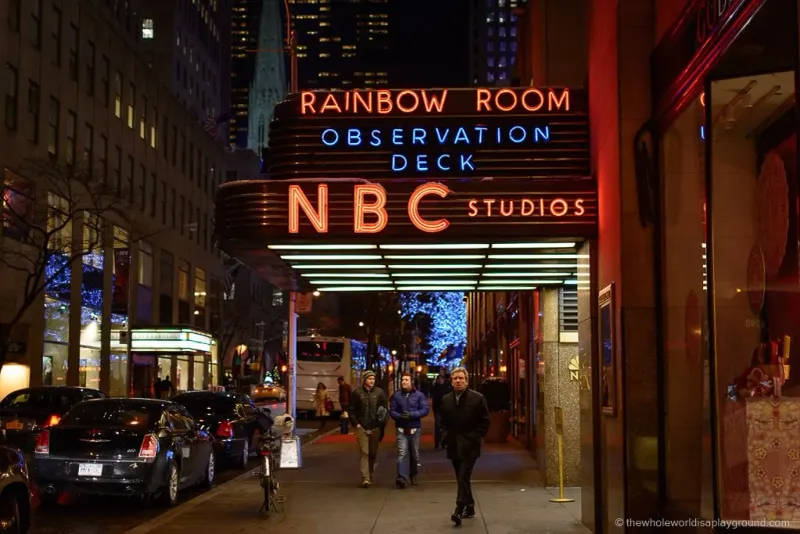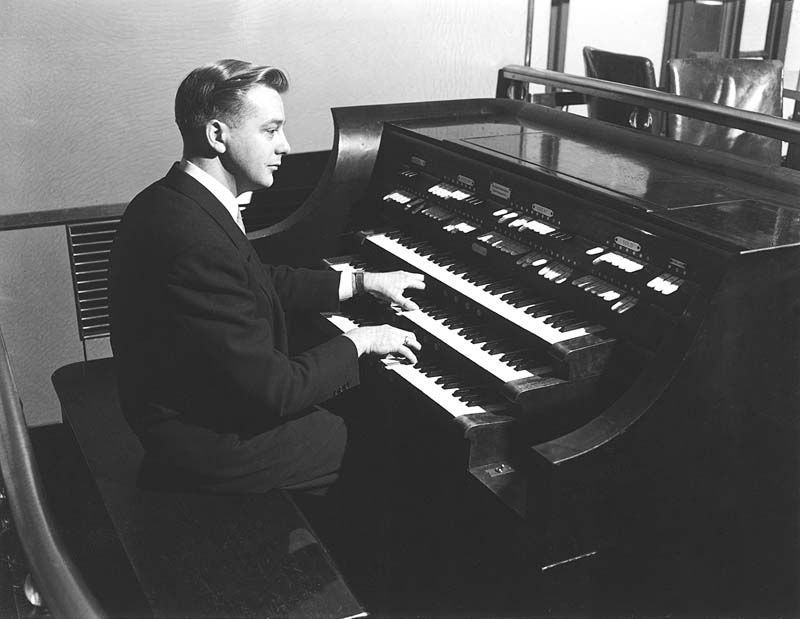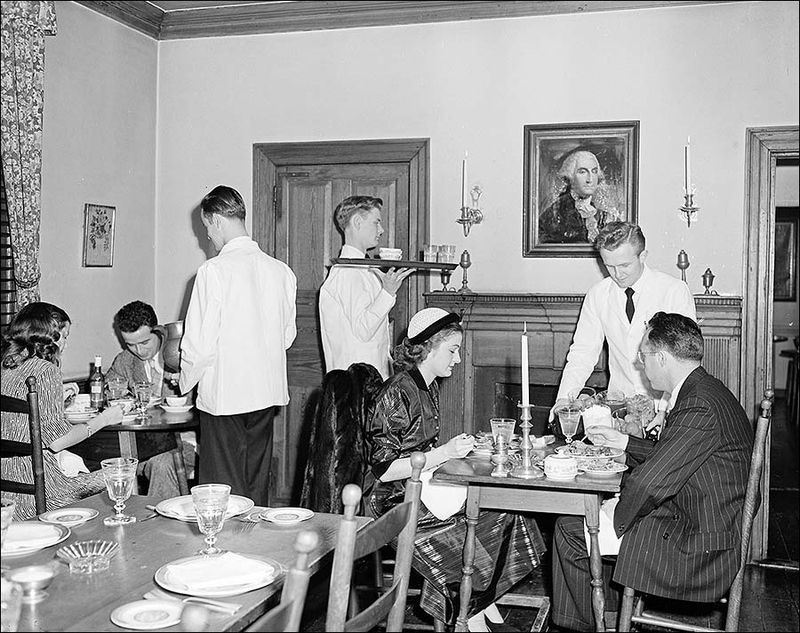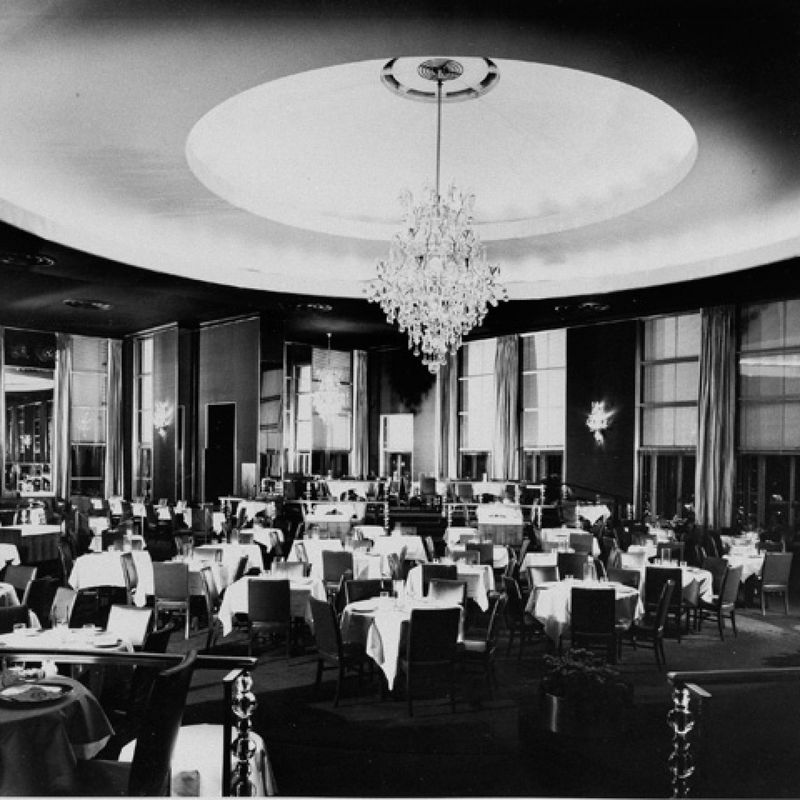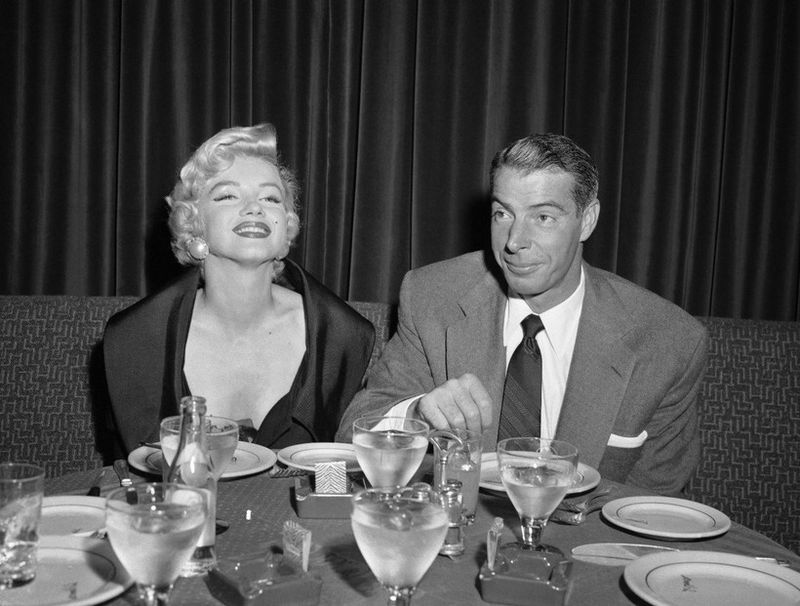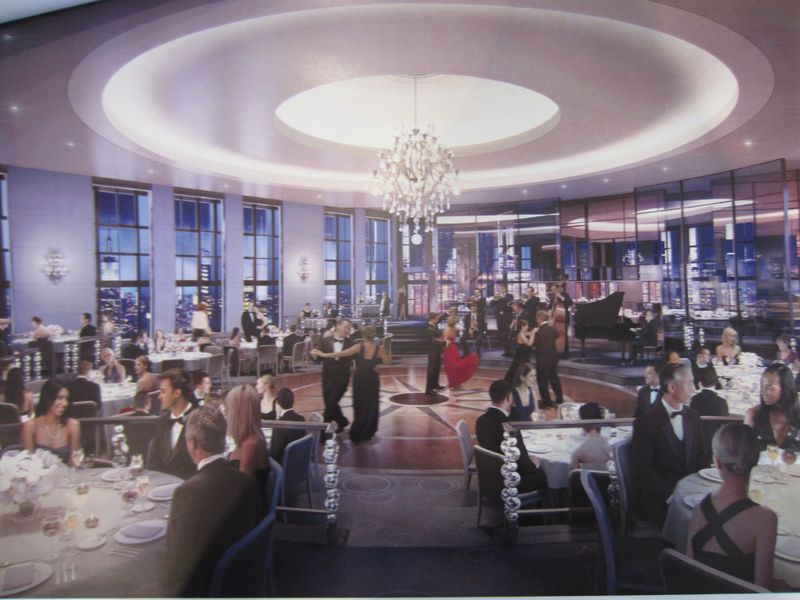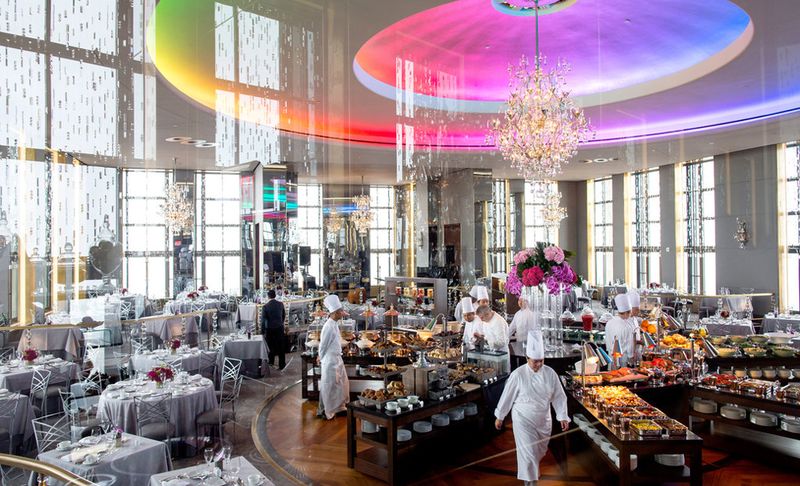When the Rainbow Room opened its doors in 1934, it instantly became the crown jewel of New York City’s nightlife. Perched 65 floors above Manhattan in Rockefeller Center, this magnificent restaurant wasn’t just a place to dine—it was an experience of unmatched luxury and sophistication. As America’s highest restaurant at the time, it offered breathtaking city views that complemented its Art Deco splendor and world-class entertainment.
1. Sky-High Grand Opening
October 3, 1934 marked a milestone in American dining history when the Rainbow Room welcomed its first guests. Newspapers across the country buzzed with excitement about this marvel situated 850 feet above street level.
The opening night dazzled with orchestras playing while guests waltzed on the gleaming dance floor. Society’s elite paid the equivalent of $82 in today’s money for dinner—an astronomical sum during the Depression.
The restaurant’s debut represented a bold statement of optimism during challenging economic times, proving that luxury and beauty could still thrive in America.
2. Architectural Marvel in the Clouds
Architects Wallace K. Harrison and Elena Bachman Schmidt crafted a space that seemed to float among the clouds. Their genius lay in creating terraced seating that ensured every guest enjoyed spectacular views through the floor-to-ceiling windows.
The room’s circular design encouraged movement and socializing, while mirrored surfaces multiplied the spectacular chandelier reflections. Even the ceiling featured concentric rings that mimicked the dance floor below.
Chrome, glass, and crystal elements embodied the futuristic optimism of Art Deco, making guests feel they’d stepped into tomorrow while dining among the stars.
3. Musical Origins of the Rainbow Name
Few diners knew that the famous restaurant nearly launched with a completely different identity. Originally conceived as the “Stratosphere Room,” the venue’s name changed after developers installed a remarkable Wurlitzer organ.
This extraordinary instrument synchronized music with a lighting system that bathed the room in shifting colors—reds, blues, greens, and purples washing across the space like a rainbow. The effect so enchanted planners that they scrapped the original name.
Musicians positioned strategically around the room created a surround-sound experience decades before such technology existed, making dining there a feast for all senses.
4. Prohibition’s End Launched an Icon
The Rainbow Room owes its very existence to a timely change in American law. Had Prohibition continued just one more year, this legendary venue might never have materialized.
John D. Rockefeller Jr., despite being a lifelong teetotaler who never touched alcohol, recognized the business opportunity when Prohibition ended in 1933. Ironically, the man who built the venue reportedly squirmed at the thought of running a glamorous nightclub where champagne flowed freely.
Rockefeller’s personal discomfort with alcohol didn’t prevent him from creating what would become one of America’s most celebrated venues for cocktail culture.
5. Dress Codes Stricter Than Royal Courts
Walking into the Rainbow Room meant adhering to fashion standards that would intimidate even today’s luxury venues. Men couldn’t enter without proper jackets, and evening events required full white tie attire—the most formal dress code possible.
Women arrived in floor-length gowns, opera gloves, and fine jewelry that sparkled under the chandeliers. Even the “casual” Rainbow Grill only relaxed standards to black tie—still requiring tuxedos for men.
Staff inspected guests’ attire before allowing them upstairs, and those failing to meet standards were politely but firmly turned away, regardless of wealth or status.
6. Playground for International Royalty
European royalty escaping pre-war tensions found the Rainbow Room a delightful haven above Manhattan. Norway’s Crown Prince Olav waltzed across the famous dance floor while Sweden’s Crown Prince Gustaf Adolf dined by the windows.
The Duke and Duchess of Windsor, after his controversial abdication, made the venue their regular stop during New York visits. Management kept a special table permanently reserved for unexpected royal guests.
Secret Service and private security teams coordinated elaborate plans for these visits, with dedicated elevators and special entrances ensuring royal privacy while allowing America’s wealthy to glimpse these titled visitors from afar.
7. Dancing on Air with Revolutionary Engineering
The Rainbow Room’s legendary revolving dance floor represented an engineering feat that left guests spellbound. Powered by an innovative motor system hidden beneath, the 32-foot diameter floor completed a full rotation every 15 minutes.
Engineers developed special bearings that eliminated vibration, allowing orchestras to play without their instruments being affected by the movement. Dancers glided across the polished surface as Manhattan’s lights twinkled beyond the windows.
The mechanism was so perfectly balanced that champagne in glasses placed on the floor’s edge wouldn’t spill as it rotated—a party trick that delighted guests throughout the evening.
8. Culinary Innovations at 850 Feet
Executive chef Pierre Franey revolutionized American fine dining by introducing French techniques to Depression-era New York. His signature “Calf’s Sweetbreads Under Bell” arrived at tables covered with glass domes that waiters dramatically lifted, releasing aromatic steam.
The kitchen pioneered temperature-controlled wine service decades before it became standard. Each bottle received precise treatment based on variety and vintage.
Despite economic hardship nationwide, the Rainbow Room served over 200 dinners nightly at $3.50 each—equivalent to $82 today. The restaurant employed twice as many kitchen staff as comparable establishments to maintain its extraordinary standards.
9. Express Elevators to Elegance
Reaching the Rainbow Room meant experiencing the fastest elevator ride in the world. Custom-designed express cars whisked guests upward at an astonishing 1,400 feet per minute—nearly 16 miles per hour—a speed that left stomachs dropping and ears popping.
Elevator operators wore white gloves and crimson uniforms with gold braid. They memorized regular patrons’ names and preferences, greeting returning guests by name as they operated the manual controls.
The 65-floor journey took just 37 seconds, transitioning passengers from street-level Manhattan to a rarified world of luxury so quickly that many described it as “magical transportation.”
10. Rockefeller’s Reluctant Relationship
Despite creating America’s most glamorous nightspot, John D. Rockefeller Jr. attended only once—on opening night. The devoutly religious businessman reportedly left early, unsettled by a French singer’s risqué performance.
Family records indicate he never returned, delegating all operations to managers while refusing to discuss the venue at family gatherings. His son Nelson, however, frequently entertained political connections there.
The Rainbow Room’s success proved financially significant for the Rockefeller Center complex, which struggled financially during its early years. Ironically, the establishment most at odds with Rockefeller’s personal values helped save his landmark development from potential bankruptcy.
11. Resilience Through American Challenges
World War II forced the Rainbow Room’s first closure in 1942 as luxury dining seemed inappropriate during wartime sacrifice. The space became a USO canteen where servicemen could enjoy free meals before deployment.
Economic upheavals caused additional closures—during the 2009 financial crisis and again during the 2020 pandemic. Each time, skeptics declared the venue permanently finished.
Yet like the city it crowns, the Rainbow Room repeatedly rebounded, reopening with renewed glamour. This resilience made it more than a restaurant—it became a symbol of New York’s enduring ability to overcome adversity with style and determination.
12. Preservation Through Landmark Status
The New York City Landmarks Preservation Commission made history in 2012 by designating the Rainbow Room’s interior as an official landmark. This rare honor—typically reserved for building exteriors—protected the venue’s distinctive architectural elements from alteration.
Preservationists fought fiercely for this status after rumors circulated about converting the space into offices. The designation specifically protected the iconic dance floor, terraced seating, and domed ceiling.
During subsequent renovations, architects worked alongside historians to ensure every detail matched the original 1934 vision. Even replacement chandelier crystals were sourced from the same European manufacturers that supplied the originals.
13. Rivalry with the Legendary Stork Club
Manhattan’s nightlife elite divided their allegiance between two legendary venues: the Rainbow Room and Sherman Billingsley’s Stork Club. While both attracted wealth and fame, they represented distinctly different social worlds.
The Stork Club catered to Hollywood celebrities, sports heroes, and new money. Dorothy Lamour, Ernest Hemingway, and Joe DiMaggio preferred its intimate, gossip-friendly atmosphere.
Meanwhile, the Rainbow Room attracted old money, international dignitaries, and those seeking understated elegance. The rivalry played out in newspaper columns and society pages, with each venue’s guest list scrutinized as a barometer of social standing in pre-war Manhattan.
14. Midcentury Revival of Forgotten Glory
By the 1970s, the once-glorious Rainbow Room had faded into a tired tourist attraction with outdated decor and mediocre food. The revolving dance floor sat motionless, its mechanism broken for years.
Restaurant Associates and architect Hugh Hardy led a spectacular $25 million renovation in 1987. They painstakingly restored original elements while adding modern amenities hidden behind period-appropriate details.
The revitalization earned the 2017 American Institute of Architects award for interior architecture. Critics marveled at how perfectly the space recaptured the optimistic glamour of 1934 while meeting contemporary expectations—a rare example of restoration improving upon the original.
15. Modern Legacy of a Timeless Space
Today’s Rainbow Room operates primarily as an event venue rather than a nightly restaurant. Couples wait years to secure wedding dates, while corporations book holiday parties seasons in advance.
The space hosts NBC television specials, fashion shows, and charity galas. While public dining opportunities are limited to Sunday brunches, the venue maintains its reputation for extraordinary service and atmosphere.
Visitors often comment that stepping into the Rainbow Room feels like time travel—a momentary escape to a more elegant era. Current management preserves traditions like tableside preparations and live orchestras, ensuring modern guests experience the same magic that captivated their grandparents.
